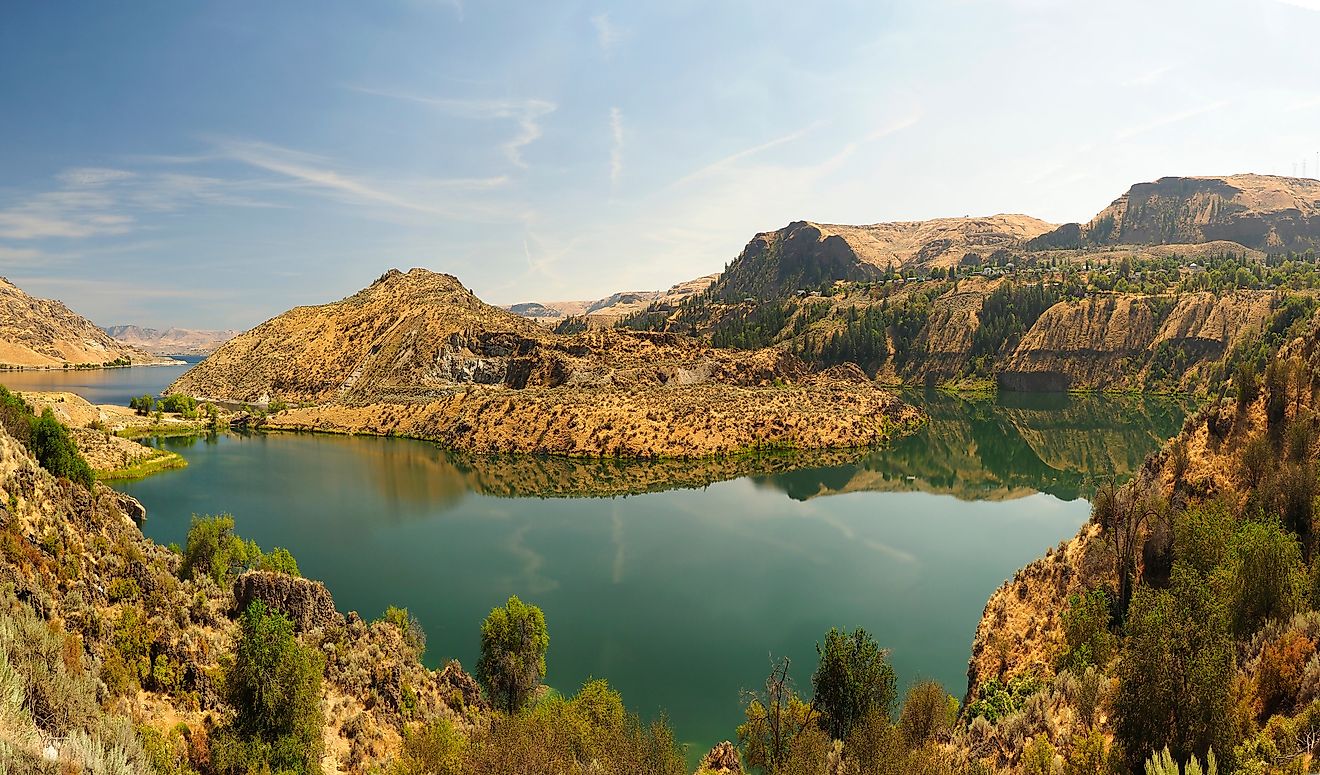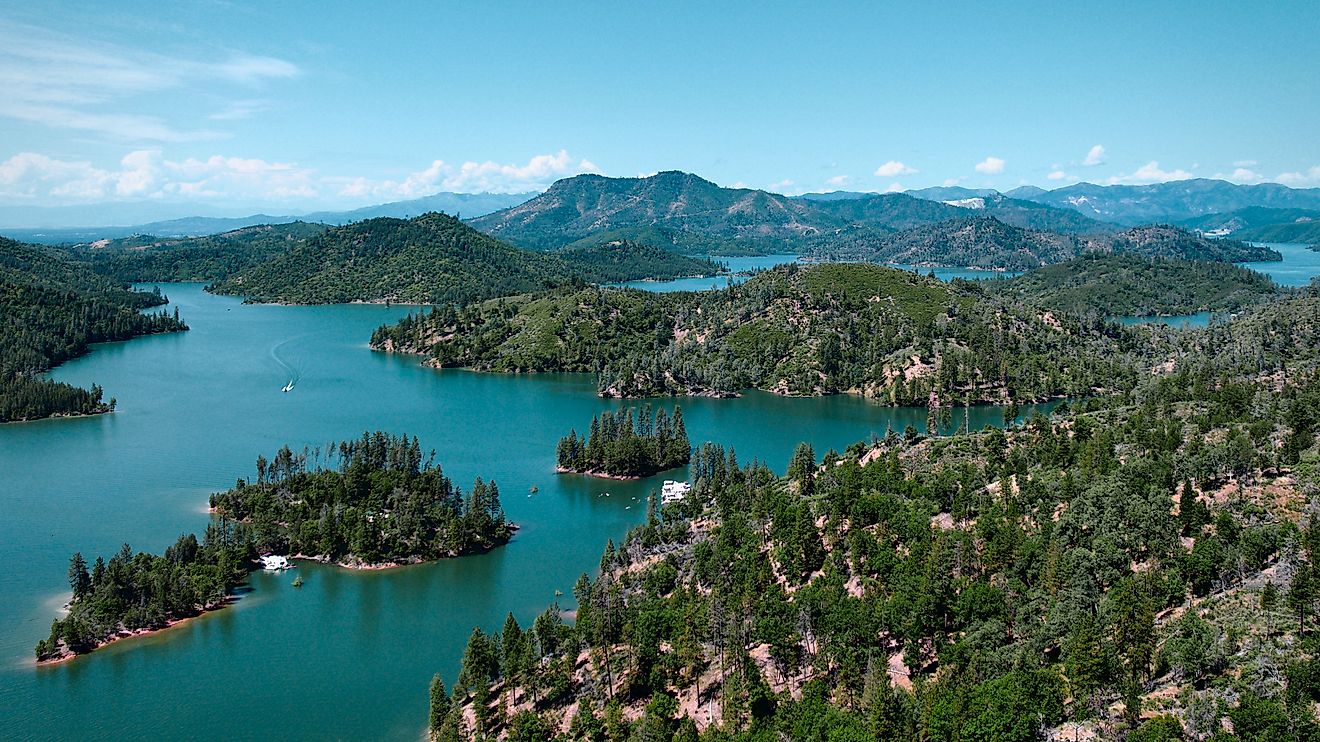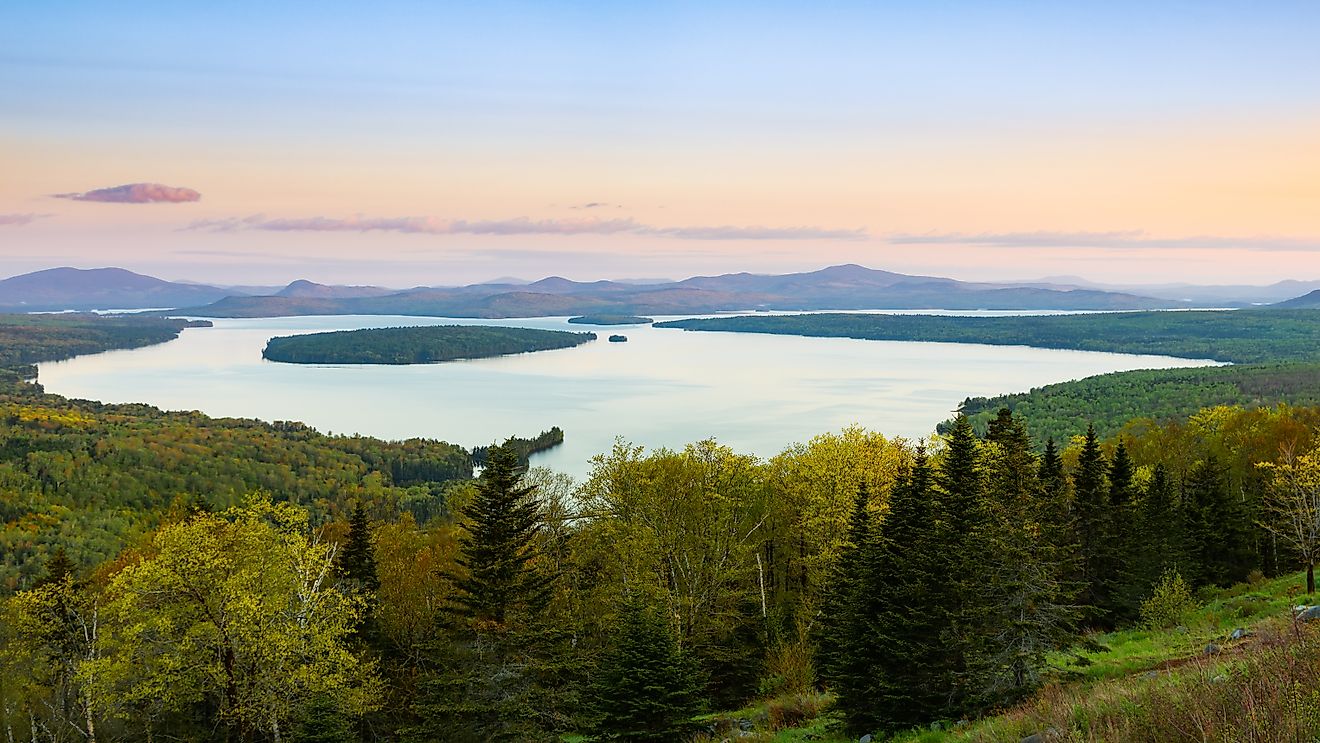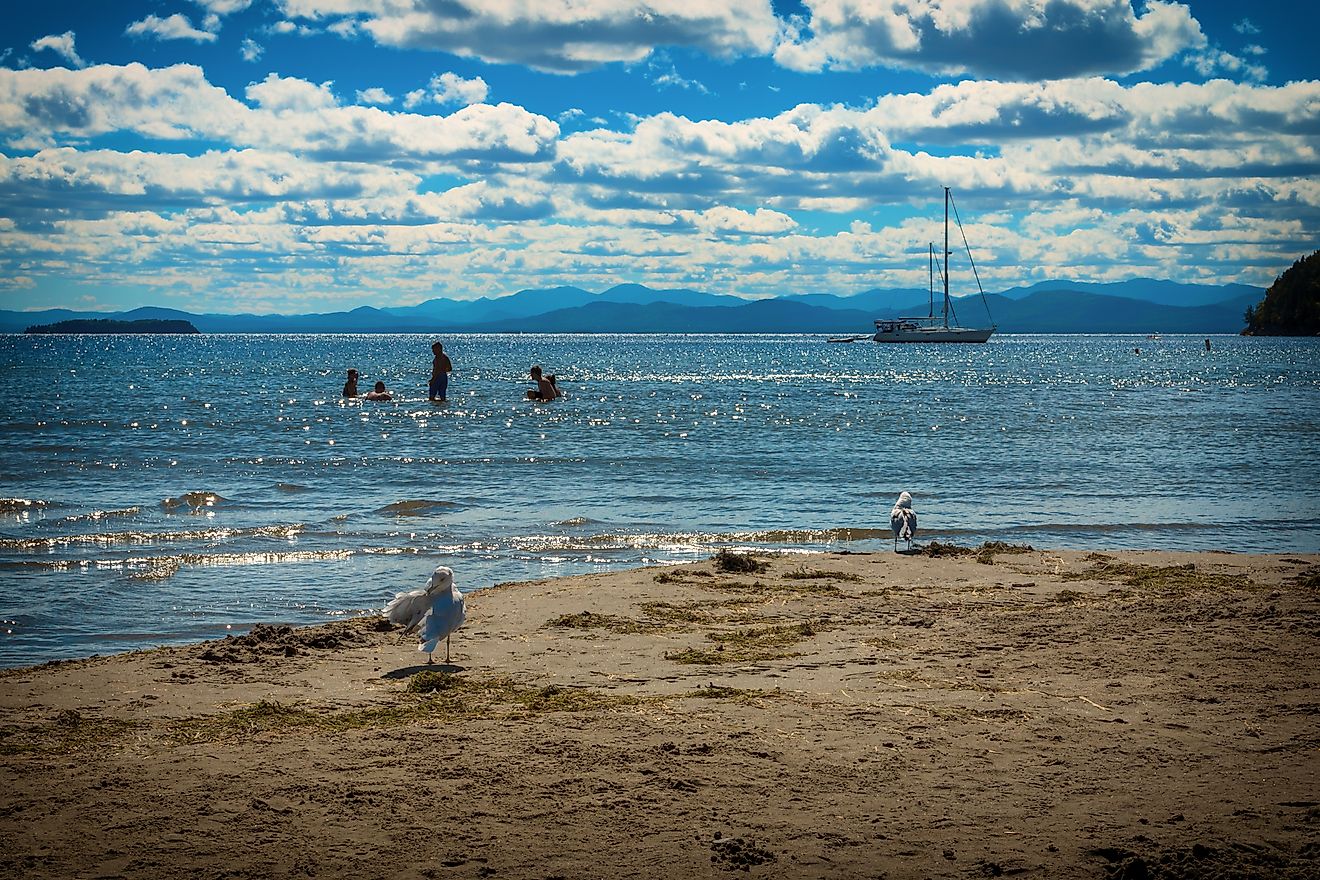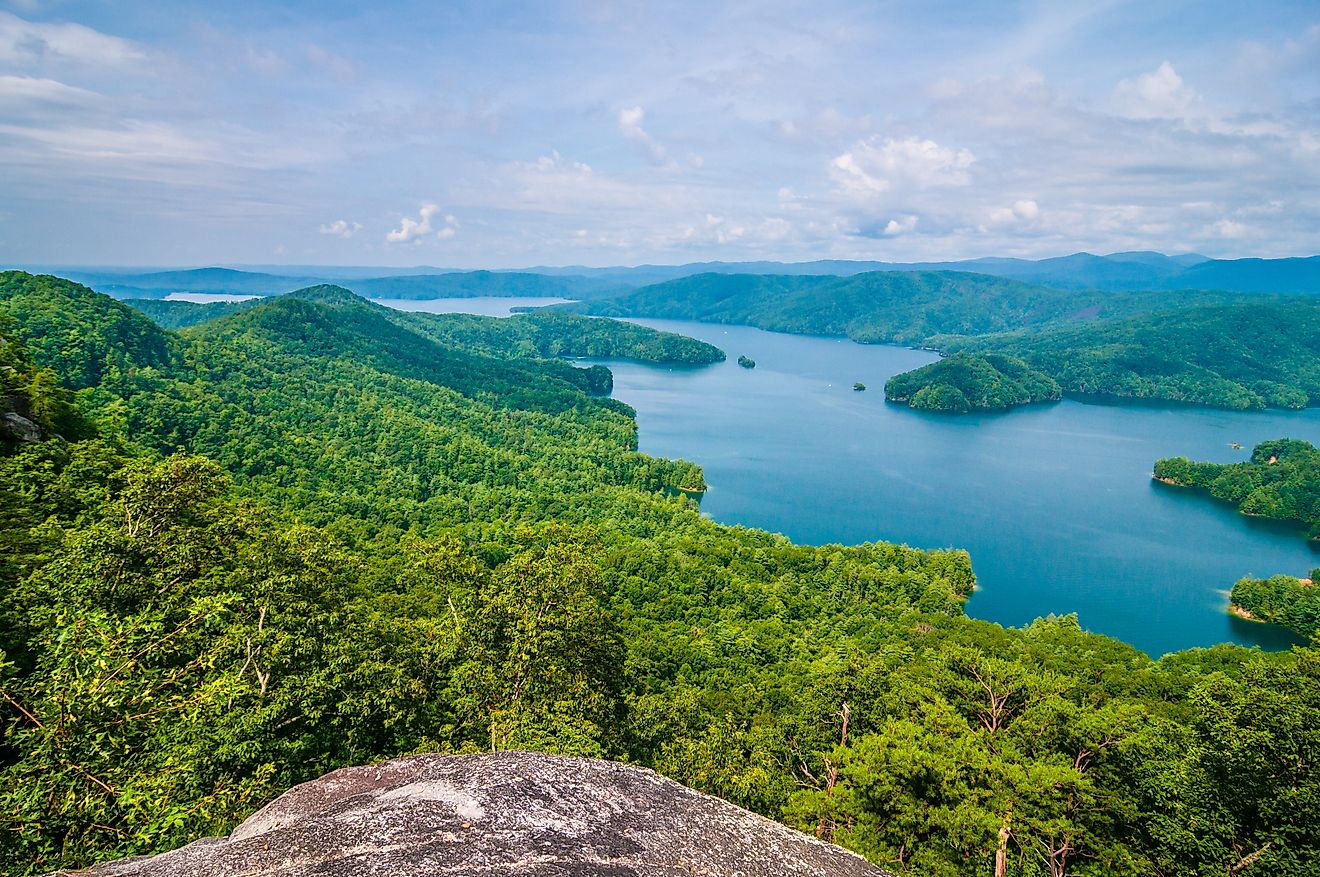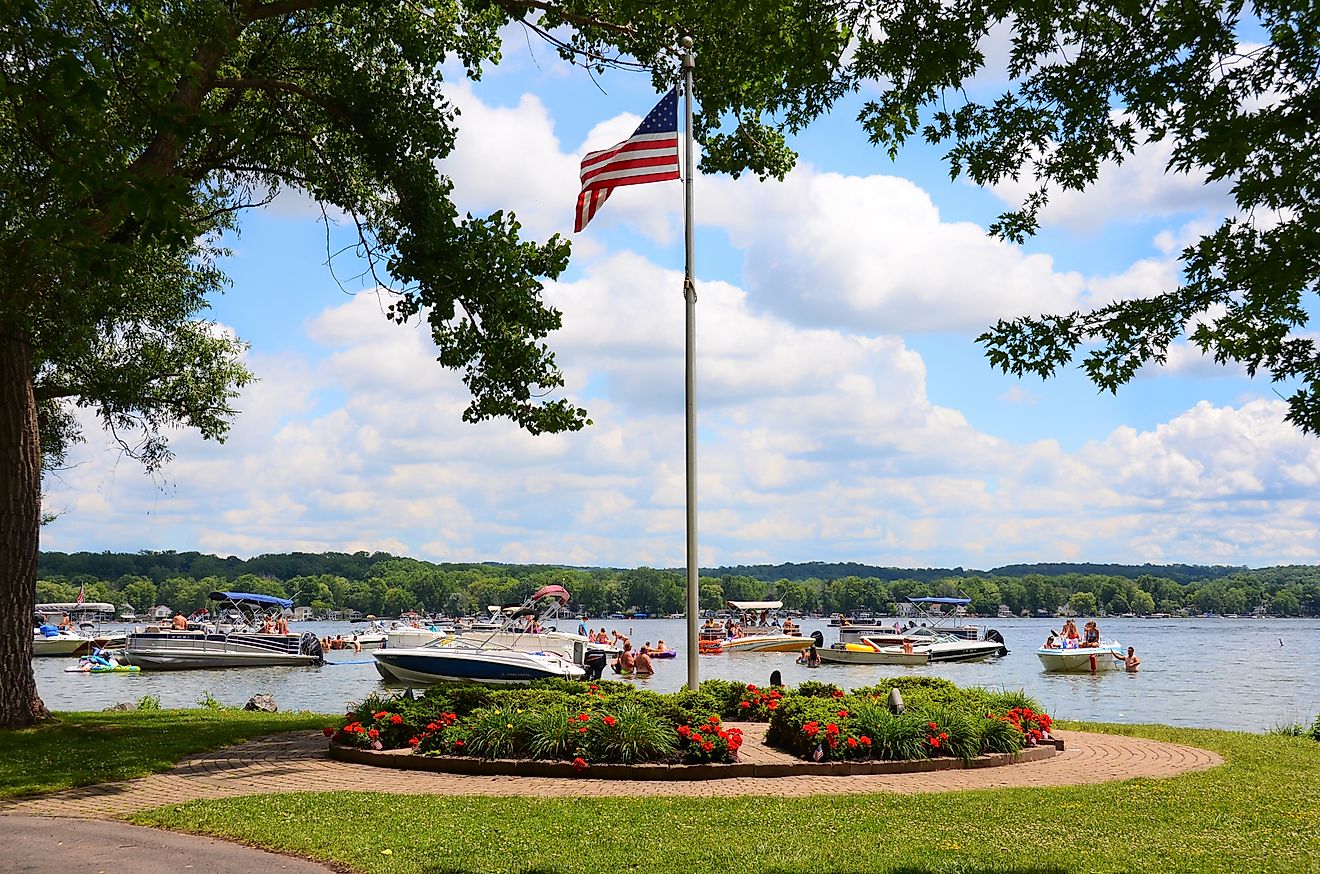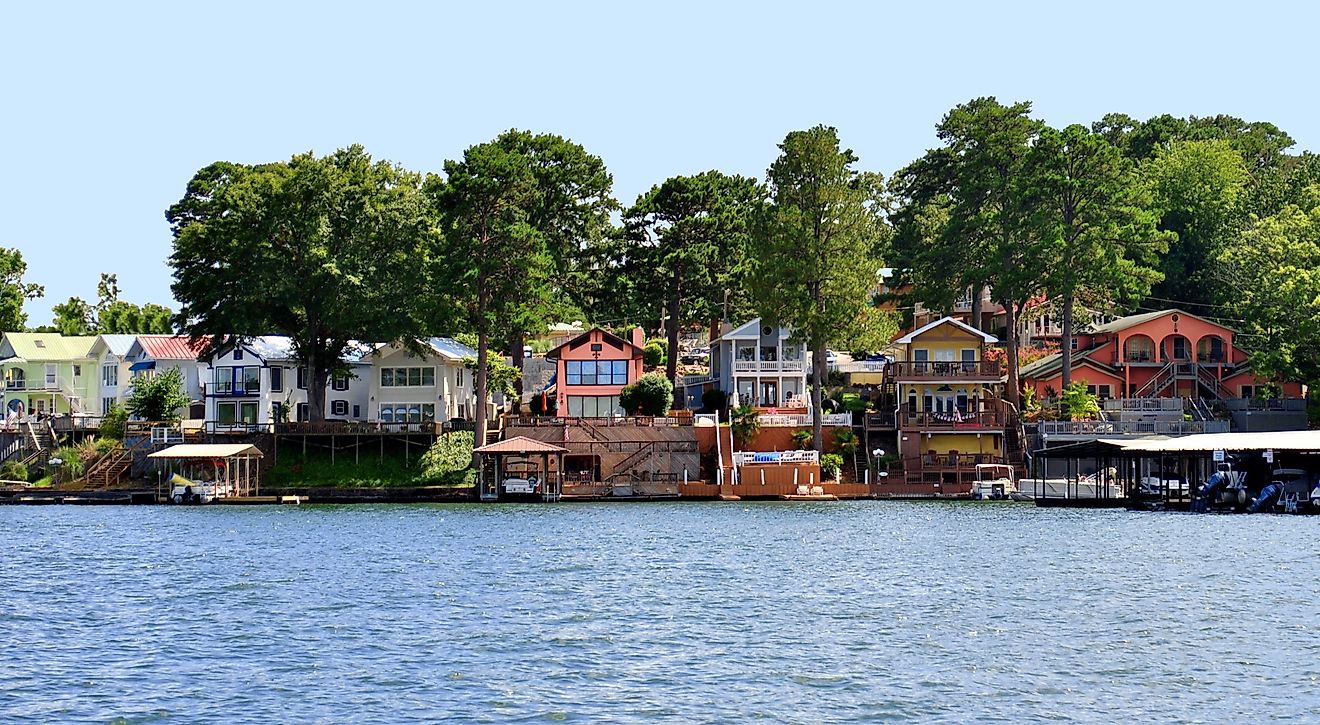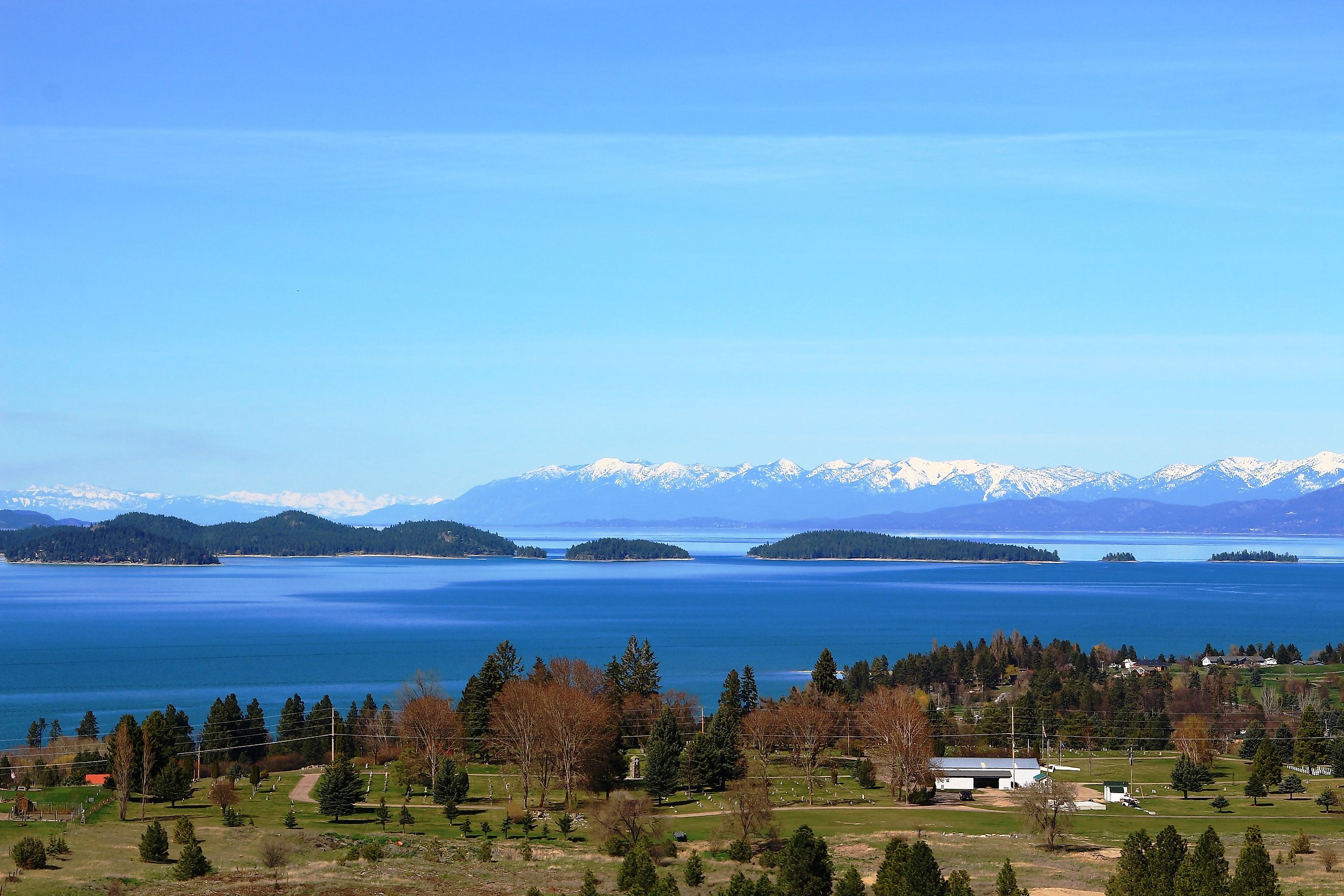
Flathead Lake: The Largest Natural Freshwater Lake in the Western US
Montana is known for its jagged peaks and sweeping prairies, but it also holds a freshwater giant that surprises first-time visitors. Flathead Lake stretches nearly 200 square miles, making it the largest natural freshwater lake in the western United States. Its waters are so clear that on calm days you can see the lakebed dozens of feet below the surface.
The shoreline mixes rugged wilderness with cherry orchards, quiet coves, and vibrant small towns, creating a landscape that feels both wild and welcoming. More than a scenic backdrop, Flathead is a place where geology, history, and recreation come together.
The Origins of Flathead Lake
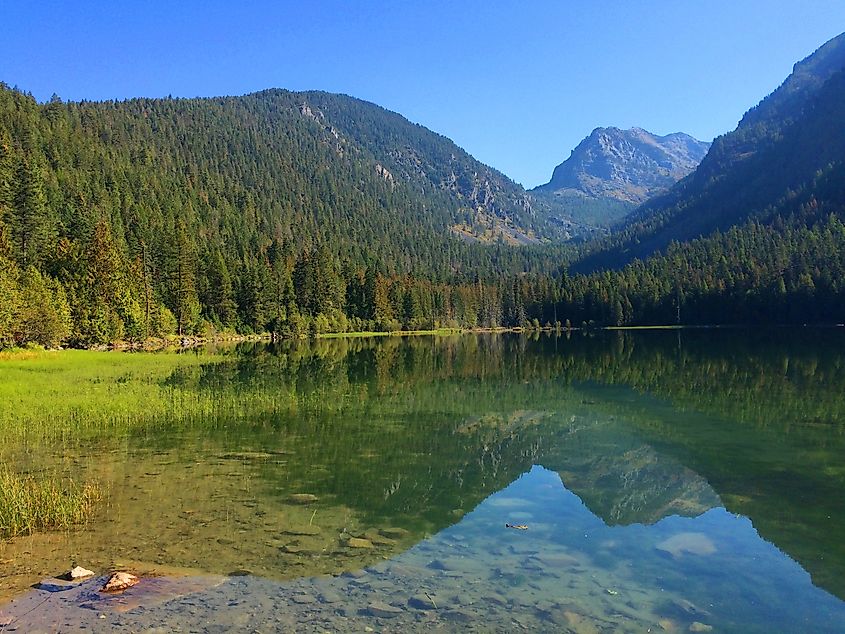
Flathead Lake is more than just a body of water. It is a remnant of Lake Missoula, a massive glacial lake that existed during the last ice age. Thousands of years ago, glaciers carved out the Rocky Mountain Trench, leaving behind a valley filled with water. At its southern end, near present-day Polson, the glacier stalled and deposited a terminal moraine. This natural dam, along with underlying bedrock, trapped meltwater and created what we now know as Flathead Lake.
Even today, visitors driving through Polson can see evidence of this glacial past. Wide, flat-bottomed passes and remnants of ancient riverbeds hint at the enormous forces that once shaped this land.
The Size and Scale of Flathead Lake
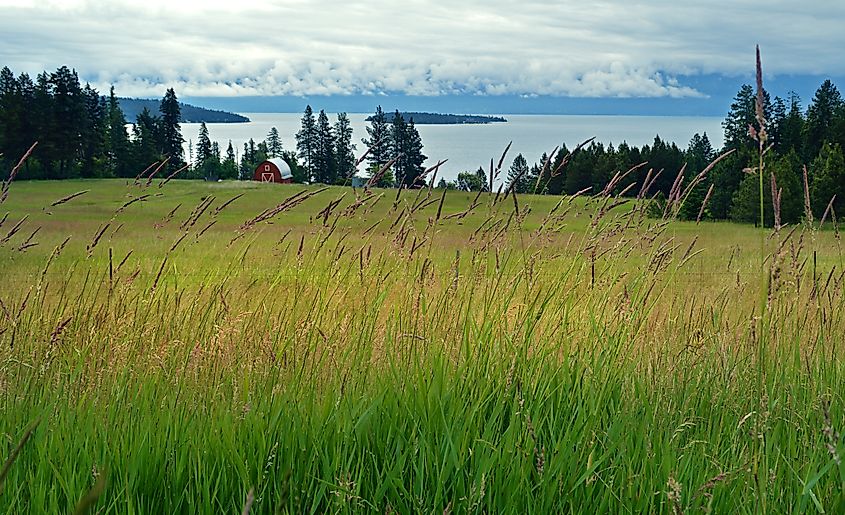
Flathead Lake’s scale surprises many first-time visitors.
-
Length: 30 miles
-
Width: 16 miles
-
Surface area: 197 square miles
-
Maximum depth: 370 feet
-
Average depth: 165 feet
To put it in perspective, Flathead Lake is larger than Lake Tahoe in surface area, though Tahoe holds more water due to its depth. It’s about half the size of San Francisco Bay and bigger than many of Minnesota’s famed lakes.
The lake’s sheer size creates the illusion of an inland sea. On windy days, waves can grow high enough to resemble an ocean shoreline, while calm days reflect the surrounding mountains like a perfect mirror.
A Landscape of Contrast
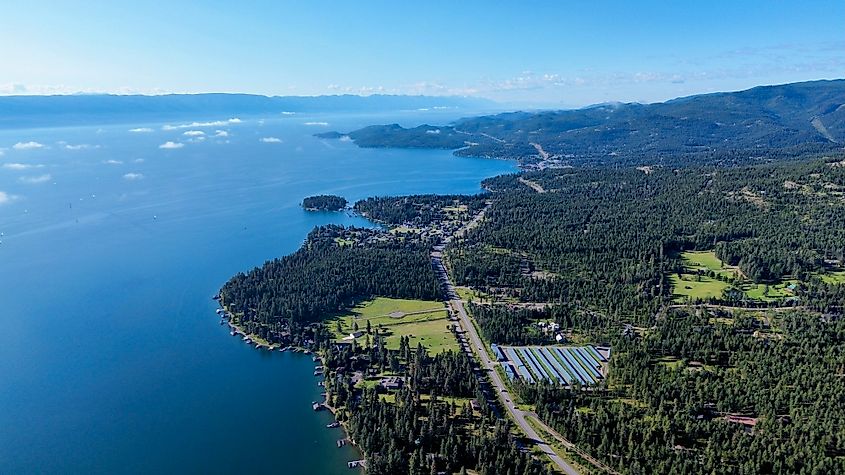
Flathead Lake sits just 30 miles southwest of Glacier National Park, making it a natural stop for travelers exploring Montana’s wild beauty. The lake is framed by two mountain ranges:
-
Mission Mountains to the east, rising dramatically from the shore.
-
Salish Mountains to the west, offering softer, forested slopes.
The climate here is surprisingly mild for northern Montana, thanks in part to the moderating effect of the lake. The east shore is dotted with cherry orchards, where roadside stands sell fresh fruit in the summer. Vineyards and apple orchards thrive on the west side, alongside fields of hay, vegetables, and even Christmas tree farms.
Islands of Flathead Lake
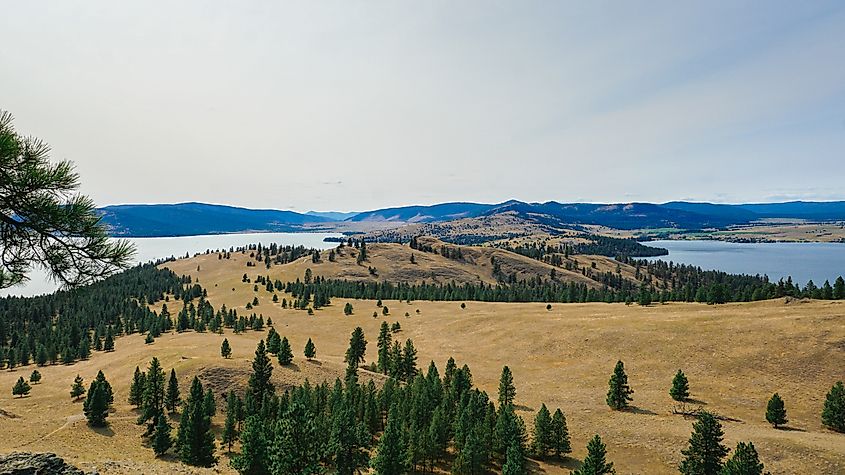
Flathead Lake is sprinkled with islands, each with its own story.
-
Wild Horse Island: The largest, spanning over 2,100 acres, is a state park accessible only by boat. As its name suggests, wild horses roam here, alongside bighorn sheep, mule deer, and bald eagles.
-
Melita Island: A 64-acre island owned by the Boy Scouts, used for camping and woodland conservation.
-
Other small islands: Scattered throughout the lake, they provide nesting grounds for eagles and ospreys.
Exploring these islands is a favorite pastime for kayakers, sailors, and boaters who crave a more connection with the lake.
Management and Modern Use
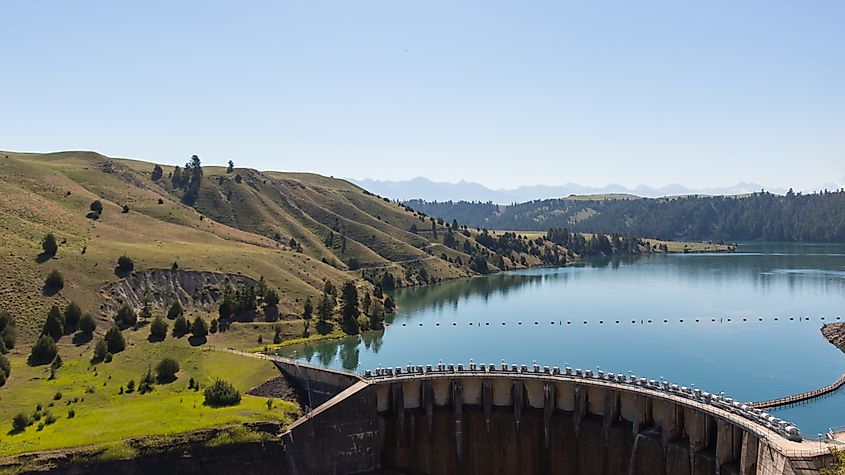
Flathead Lake is not entirely untouched. In 1930, Kerr Dam (now called the Seli’š Ksanka Qlispe’ Dam) was built at Polson Bay, raising the lake slightly and generating hydroelectric power. Today, the dam is owned and operated by the Confederated Salish and Kootenai Tribes, who balance power generation, water management, and the health of aquatic ecosystems.
Water management is complex here. The Flathead River and Swan River feed the lake, while outflows must be carefully monitored to protect downstream fish habitats and manage flood risks. In recent years, drought conditions have made water levels a hot topic, impacting boating, fishing, and the livelihoods of businesses that depend on summer recreation.
Wildlife and Fisheries
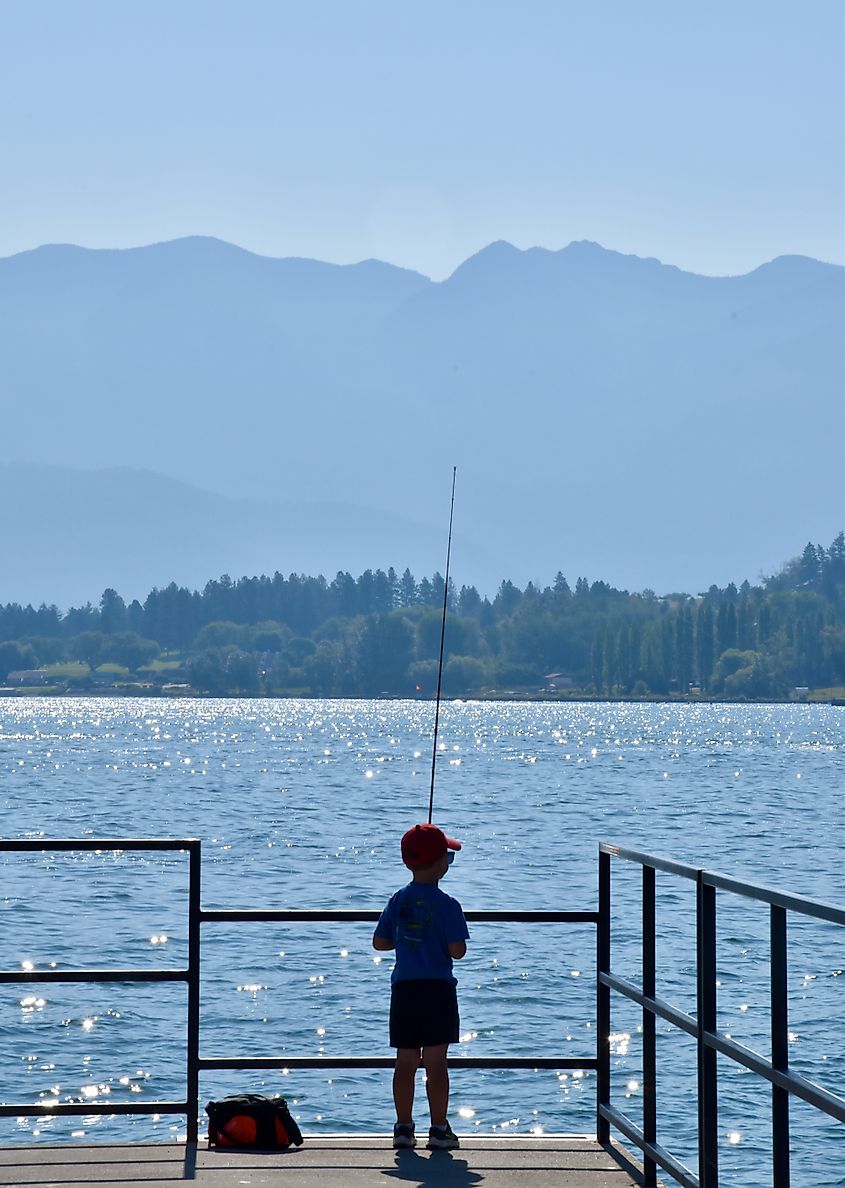
Flathead Lake is as rich in wildlife as it is in scenery. Its waters are home to a mix of native and introduced species:
-
Native fish: Bull trout and westslope cutthroat trout.
-
Introduced fish: Lake trout, yellow perch, lake whitefish.
-
Other species: Anglers sometimes report sightings of sturgeon.
One of the biggest ecological shifts came from the introduction of opossum shrimp. Intended to boost food supplies for kokanee salmon, the shrimp instead fed lake trout, causing their population to explode. As lake trout thrived, kokanee salmon disappeared, altering the lake’s food chain.
To restore balance, the Confederated Salish and Kootenai Tribes host Mack Days, a fishing competition where anglers target lake trout to reduce their numbers. Since 2002, hundreds of thousands of lake trout have been removed from Flathead Lake.
Recreation: A Four-Season Playground
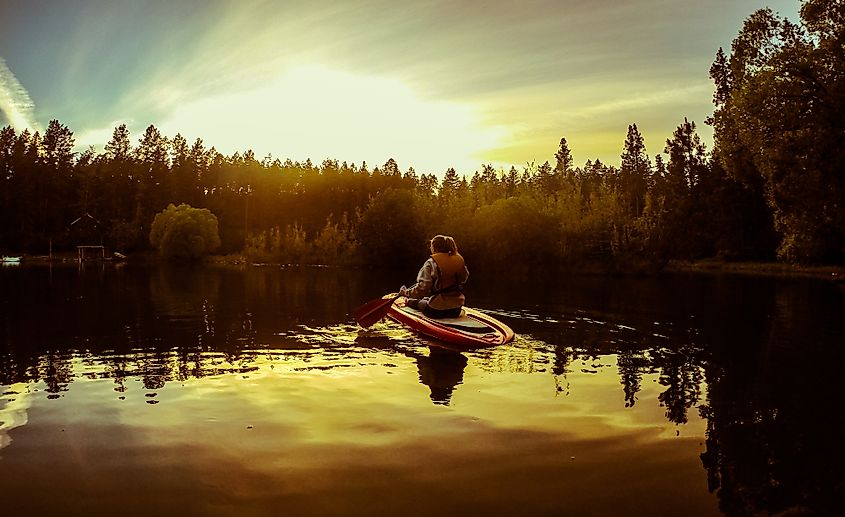
Flathead Lake is one of Montana’s premier destinations for outdoor recreation.
On the Water
-
Sailing, kayaking, and paddleboarding are popular in the summer.
-
Fishing draws anglers year-round, with lake trout being a favorite catch.
-
Boaters can explore hidden coves and camp on islands.
On the Shore
-
State parks like Wayfarers, Yellow Bay, and Finley Point offer camping, swimming, and hiking.
-
Visitors can sample locally grown cherries, apples, and wine along the shoreline.
In the Air
Birdwatchers flock here to spot bald eagles, ospreys, and waterfowl. The lake’s islands and forests make it a haven for wildlife photography.
Folklore: The Flathead Lake Monster
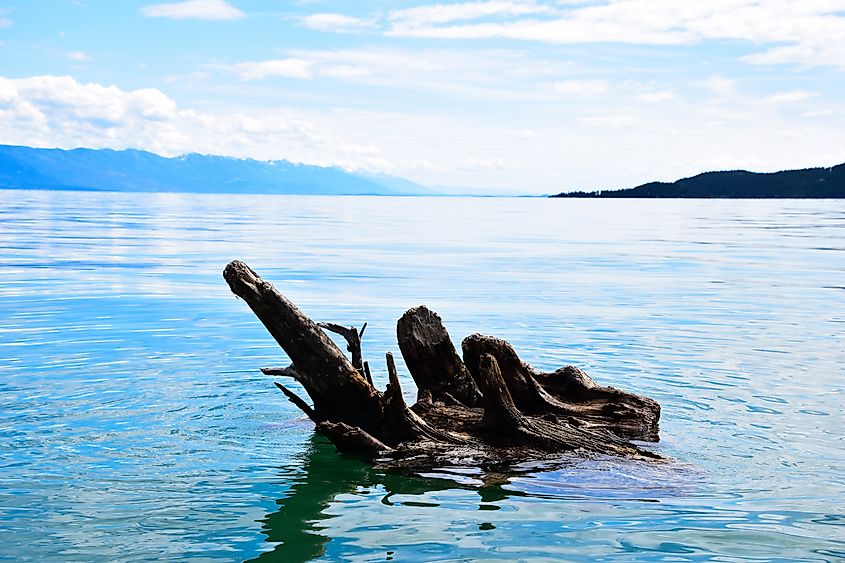
No great lake is complete without a local legend. For Flathead, it is the mysterious Flathead Lake Monster. Stories of a large, serpent-like creature have circulated for more than a century. Some accounts describe it as 30 to 40 feet long, resembling a plesiosaur. While no scientific evidence exists, the legend endures, adding a touch of mystery to this already extraordinary lake.
Flathead Lake vs. Other Great Lakes of the West
| Lake | Surface Area | Max Depth | Location | Notes |
|---|---|---|---|---|
| Flathead Lake | 197 sq mi | 370 ft | Montana | Largest natural freshwater lake west of Mississippi by surface area |
| Lake Tahoe | 191 sq mi | 1,645 ft | California/Nevada | Smaller surface but much deeper |
| Red Lake | 427 sq mi | 273 ft | Minnesota | Larger but shallower |
| Mille Lacs Lake | 207 sq mi | 42 ft | Minnesota | Similar size, much shallower |
